CHANGING PLACES / ESPACIOS REVELADOS in Peru
Crossing divides
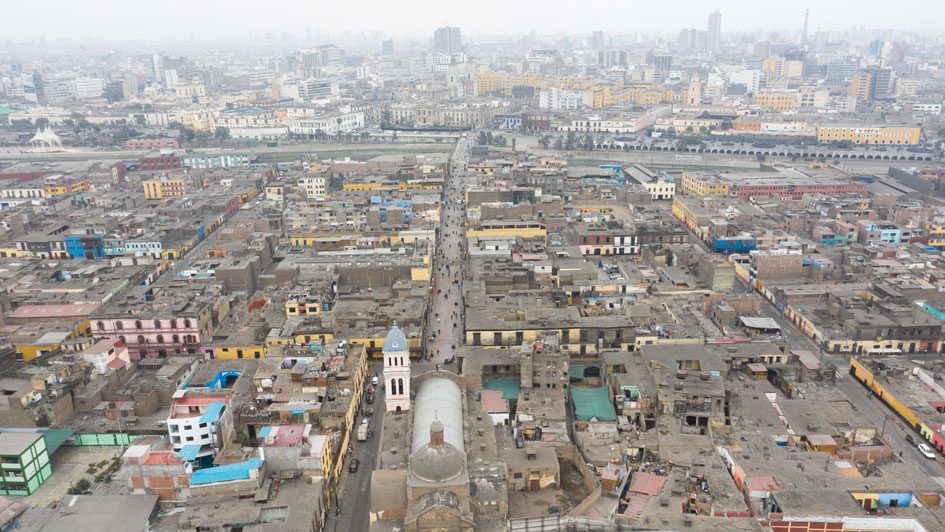
At divides in the city of Lima, CHANGING PLACES / ESPACIOS REVELADOS created new spaces for aesthetic experience. Artists participating in the project casted new light on unused spaces in the city of 10 million people, raising questions about the role of art in creating public areas for common use, especially during times of social distancing due to the coronavirus pandemic.
ApproachA fragmented city
It seems paradoxical: even as communities are becoming more distinct and lifestyles more diverse, a city is still often seen as a uniform entity. But what are the commonalities that shape a city? If art is no longer seen as an isolated experience and is instead considered as a communicative and spatial process for creating utility from conflict, what opportunities arise for a city’s development and potential? The CHANGING PLACES project in the Peruvian capital explored answers to these questions.
Lima has the appearance of a city made from disjointed parts developing independently, with local districts having distinct and separate social and communicative growth. Each of the city’s districts is seeking its own future, and the resulting societal divide has left its mark on the city.
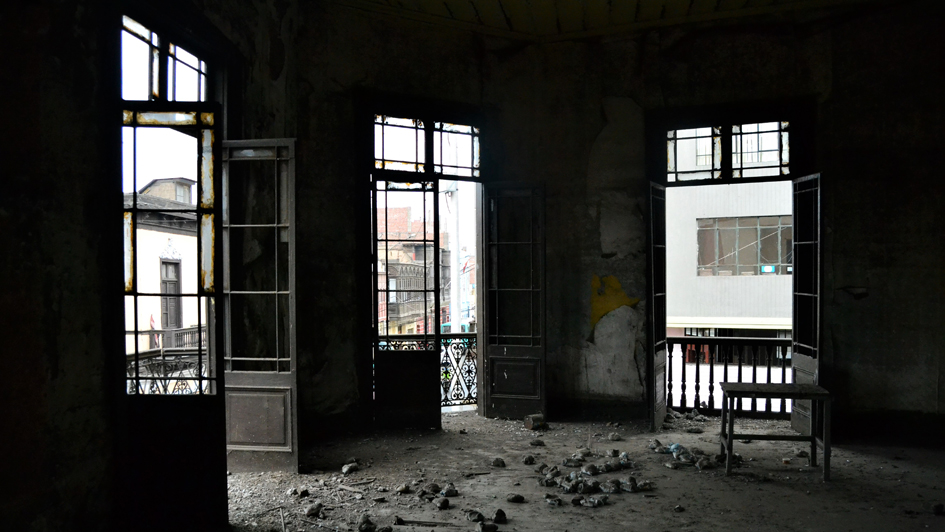
ProjectCreating common spaces through art
The divide is most apparent in the city’s historic center on the banks of the Rímac River. The districts of Cercado de Lima and Barrios Altos are on the south side of the river, with the Rimac district to the north. The city’s oldest districts are home to colonial houses protected as UNESCO world heritage sites, but also include informal settlements on the mountain slopes – evidence of the intense migration that Lima has experienced in the last 30 years.
27 artworks explored visible and invisible urban spaces in addition to structures that have fallen out of use, been overlooked, or withdrawn from view. Through activities and works of art, the artists sought to create public spaces and invite residents to cross the bridge – symbolically and physically. How can ties be forged between disparate city centers, social classes, cultures, and with nature? How do barriers become tangible? The project also addressed the right to culture and the importance of cultural dynamics for preserving public life and community.
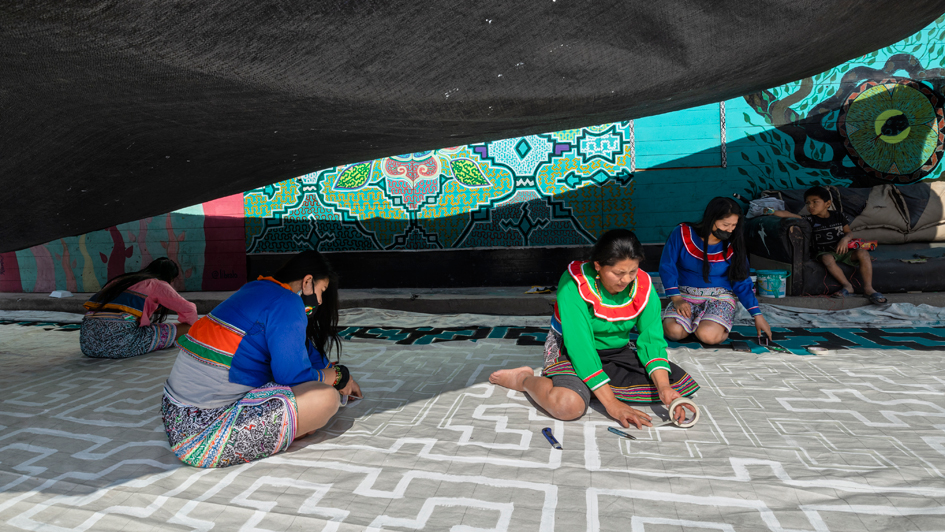
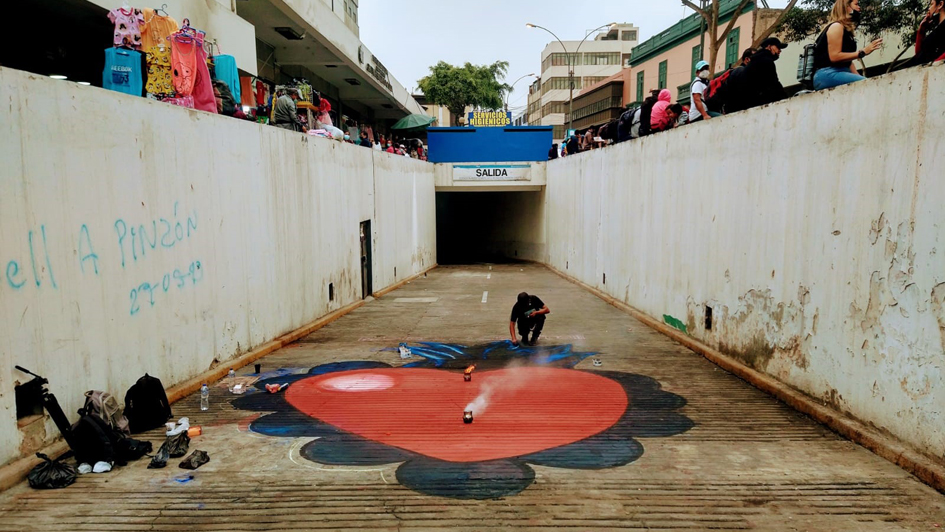
27 site-specific works invite you to cross the bridge
From November 12, 2021, until March 2022, the resulting works have been on view in a five-month series. On one weekend per month, artists and collectives from Peru, Mexico, Brazil and Spain showed installations, performances and architectural displays in public space. To mark the start of the series six artworks have been on display in three areas of the city: An old tobacco factory became a space for encounters, people’s experiences of the pandemic were to be shared through letters in the former central post office, and the healing songs of Shipibo women invited listeners to turn their thoughts to the polluted river. Excluded sections of the population were becoming visible on the city’s streets and in its squares, putting the spotlight on both colonial-era and migrant experiences. People living in the districts either side of the Rímac worked with artists to create a social sculpture, build a symbolic bridge over the river, or restore their collective memory by coming together to construct a snake-shaped building for children using a traditional adobe technique. The artworks could be experienced one by one or all together on several tours each day.
Artists and collectives: Comunespacio, Sandra Nakamura, elgalpón.espacio, estudio de arquitectura 24/7, DIADIA arquitectura, Oscar Pacheco, Proyecto Yivi (Mexico), Al Borde, Angeldemonio Colectivo Escénico, Artefactum & La Comuna, Gonzalo Fernández, Más Cultura Más Peru, Andes Meki y Nemo, Colectivo Shipibas Muralistas, Carlos Troncoso & Karen Bernedo, Pilar Pedraza, Valeria Herrera & Sebastián Anglas, Javier Bravo de Rueda, Sebastián Montalvo, Daniel de la Barra, Panparamayo, Carlos León Xjimenez & Colectivo C.H.O.L.O.
Locations: Casa de Correos y Telégrafos, Trujillo Bridge, Church of San Lázaro, the former Backus brewery, the Alameda de los Descalzos, which links the Balta Bridge and the Conjunto Habitacional La Muralla, Alameda de los Descalzos, Correo Central, Plaza Italia, Colegio Real, Fábrica Backus, Jirón Andahuaylas, Mercado Central, Mercado y Plazuela del Baratillo, Jirón de la Unión, Hotel Bolívar, Puente Balta, Puente Trujillo, Feria de Libros Amazonas, Plazuela Revolver, Plazoleta de la Integración, Quinta Sr de la Justicia, Alameda de los Descalzos, Parque y Conjunto Habitacional La Muralla, Jirón Hualgayoc and Fábrica SIAM.
Gemeinsame Geschichten und Visionen
Wenn ungenutzte Räume zu Orten gemeinsamer Geschichten und Visionen werden: Eine Videoserie gibt Einblicke in die bisherigen Arbeiten von CHANGING PLACES / ESPACIOS REVELADOS in Lima.
ImpactHow did CHANGING PLACES make a difference?
«The whole project is very brave and necessary. It shows that art is not only for the educated elites. The residents of Rimac who participated in the development of the projects did so with enthusiasm because they felt heard. Espacios Revelados helped them see their public places in a different light, as their places to preserve and care for. I have been asked by different people if the art interventions could be made permanent. As a city government, we now want to develop projects to revitalize traditional places.»
Victor Rojas
Cultural Manager of the Historical Center of Rímac and responsible for inter-institutional relations
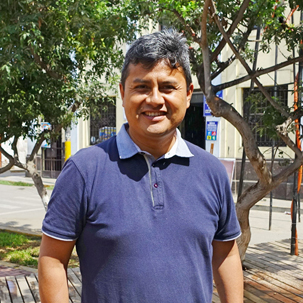
«I have never been part of a project where so many artists were in action at the same time. We have shown what a lively cultural scene Lima has. Because Espacios Revelados is interdisciplinary, many new connections have been made between the artists. The public response, especially to the tours that lasted several hours, was tremendous. There was a real hunger for such an event.»
Paloma Carpio
Artist, cultural manager, professor and curator of CHANGING PLACES in Lima
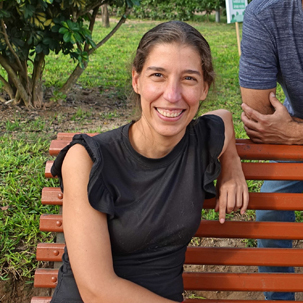
«Our project shows that there are many more relevant voices in Peruvian society than those who always speak out publicly. Women in particular have a wealth of experience and knowledge that does not appear in public. For decades, they didn’t have a voice, especially if they didn’t meet the norms. Now, that is slowly changing. Yet women could bring so much to the table in terms of knowledge and experience. I think that you shouldn’t construct a city without the diversity of its inhabitants.»
Natalia Iguiñiz
artist, developed the sound installation “Las Habladoras” for CHANGING PLACES in Lima together with Gala Berger and Nancy La Rosa
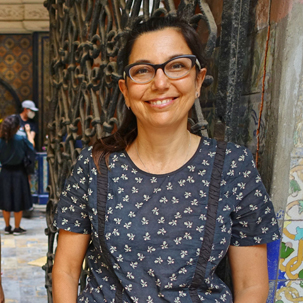
«Espacios Revelados helped me to see Lima with different eyes. It’s amazing how little you end up knowing your own city, which of course has to do with its size but also with the invisible social barriers that exist everywhere. Above all, I take these new perspectives and impressions with me. Because that’s what it’s all about, a change of perspective, that you recognize the problems of the city, but also its huge and unfortunately often buried possibilities.»
Álvaro Rodriguez
Architect, visitor of Espacios Revelados
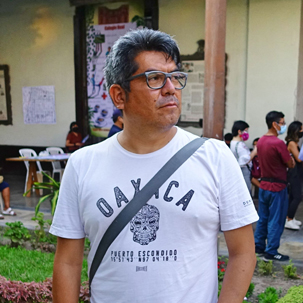
Previous project phases: research, discourse, digital dialogue series and videos
The project in Lima began in 2019 with extensive research on unused urban spaces, vacant buildings and their social contexts; questions of exclusion and participation played a role, as did aspects of tangible and intangible cultural heritage. The project launched with a monthly digital dialog series that began in June and ended in December 2020. Experts from a variety of disciplines explored subjects including the role of art and culture in the context of crisis; the role of markets as urban spaces of production, consumption, and interaction; urban inequality; and access to common goods. In addition, the experts considered urban sustainability, the relation between urbanity and nature, and vulnerable populations and inclusion in the city.
The digital conferences reached 30,000 viewers via Facebook. During the pandemic, 21 videos of artistic experiences on these thematic blocks were also published. After a call for artistic ideas on concrete neighborhoods, a jury selected 18 positions from Peru. A discourse program with lectures and discussions to contextualize the projects took place over 8 months for one weekend each between May and September 2021. The project activities were also accompanied by an advisory board and research from the Universidad Nacional de Ingenería on the selected sites.
Previous project phases: research, discourse, digital dialogue series and videos
The compilation video provides an insight into the first series of dialogs.
Partners
CHANGING PLACES / ESPACIOS REVELADOS ist eine Initiative der Siemens Stiftung mit Partner*innen in den verschiedenen Ländern
In cooperation with:
Municipalidad Metropolitana de Lima, Gerencia de Cultura y el Programa Municipal para la Recuperación del Centro Histórico – PROLIMA, Municipalidad del Rímac, Ministerio de Cultura, Centro Cultural de la Universidad Mayor de San Marcos, Escuela Nacional Superior Autónoma de Bellas Artes, Goethe-Institut Peru, Beneficencia de Lima, dem Museo de los Descalzos, Revista Devenir, Ícomos Perú, Yuyai-UNI and other partners.
LinksWould you like to learn more?
Webseiten
Social Media
Downloads
Contact
Do you want to work with us? Do you have questions?
Project manager CHANGING PLACES
Joachim Gerstmeier
+49 89 540487 316



